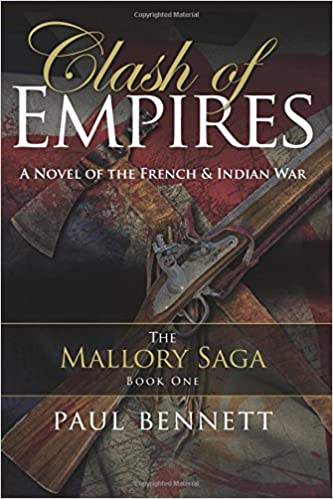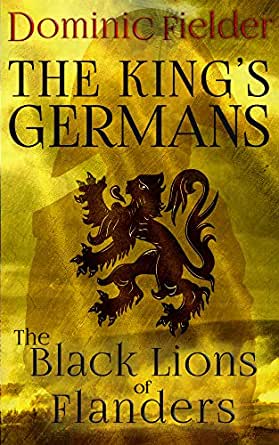
A Behind the Scenes Look at the Making of The Mallory Saga, by Paul Bennett
My interest in history began in the early 1960’s and can be partially attributed to movies such as, Spartacus, The 300 Spartans, Ben Hur, and the like. A purloined, rolled up, weekly food store newspaper advertisement made an excellent gladius; the handle held together with only the finest rubber bands; my best friend and I exchanged blows as Kirk Douglas and Tony Curtis battling it out for Olivier’s pleasure. In quieter moments, at the Monteith Branch of the Detroit Public Library system, I read about Heinrich Schliemann and his discoveries at Mycenae, and at Troy. I was hooked on history from then on. All through my educational phases, up through 3 years of college, I was far more interested in history classes, or other classes that delved into our past. At Wayne State University in Detroit, Michigan, I majored in Classical Civilization, basically the study of ancient cultures from the Mesopotamian Crescent through the Roman Empire, and that required the learning of Ancient Greek, so I must have been serious about it. I also minored in Physical Anthropology. After I left college, needing a break from 18+ years of school, the last 5 of which included working full time, I found myself free to read what I wanted. Mary Renault got me hooked on historical fiction. The King Must Die was the first book that showed me that historical events could be rendered into fiction, albeit in this case mythological history. Colleen McCullough’s First Man in Rome series sent me searching for more. Boy what a treasure trove of books to choose from. What an eye opener, and one that propelled me into a voracious frenzy of reading and learning; a situation that has not abated over the decades. Indeed, the number of talented historical-fiction authors I have come across over the years is truly astounding. Through the medium of social networking I have become friends with many of those authors, and it is partly because of them that I not only started a book review blog, but also began my journey to producing Clash of Empires; the first book in my series, The Mallory Saga.
The French and Indian War seemed to me to be the perfect historical event to begin my ambitious idea to portray the history of this country through the eyes of a fictional family, the Mallorys. This was a worldwide, cataclysmic event; indeed some have called it the real First World War as it was fought not only here in America, but also in Europe, and The West Indies. At issue was control of the rich fur trade, and to control that required control of the Ohio River. The French, through a series of forts strategically placed along the main waterways in the western frontier, formally laid claim to the territory. None was more important than Fort Duquesne, modern day Pittsburgh, situated at the headwaters of the Ohio. The British fur trading companies were being systematically pushed out by patrols of French soldiers and their native allies. This was also halting the westward progress of the American colonies. More and more settlers were crossing the mountains seeking new lives and fortunes. Clash of Empires is the story of that war, one that had enormous consequences for all parties involved.
A Brief Synopsis of Clash of Empires
In 1756, Britain and France are on a collision course for control of the North American continent that will turn into what can be described as the 1st world war, known as The Seven Year’s War in Europe and The French and Indian War in the colonies. The Mallory family uproots from eastern PA and moves to the western frontier and find themselves in the middle of the war. It is the story of three siblings, Daniel, Liam and Liza and their involvement in the conflict and the emotional trauma they endure. The story focuses on historical events, such as, the two expeditions to seize Fort Duquesne from the French and the fighting around Forts Carillon and William Henry and includes the historical characters George Washington, Generals Braddock, Forbes and Amherst. The book also includes the event known as Pontiac’s Rebellion in which the protagonists play important roles. Clash of Empires is an exciting look at the precursor to the events of July 1776; events that will be chronicled in the second book as I follow the exploits and fate of the Mallory clan.
The second installment in the Mallory Saga, Paths to Freedom, continues the Mallory family story as they navigate the years leading up to The American Revolution. Many paths open up with the changing situation between the British and the Sons of Liberty, and between settlers and increasingly pressured Indians. It is also time for the Mallory children to become more involved. In Paths to Freedom, Thomas, the eldest son of Liza and Henry, travels east to Boston where he joins up with such historical revolutionary luminaries as Paul Revere, Sam Adams, John Hancock and Dr. Joseph Warren. Paths to Freedom ends with the Battle of Lexington and Concord – the famous ‘shot heard round the world’, meaning that book three will cover the years of the war itself.
While the main intention to writing this saga is to entertain, there is also a focus on telling the history of this nation, or at least parts of it; parts that may or may not be taught in school text books, especially concerning the ‘near genocide of an entire people,’ as quoted by the journalist interviewing Jack Crabb in the movie Little Big Man. I’m not quite sure yet, but have a feeling that figures like Andrew Jackson, or George Armstrong Custer might get a bit of a rough going over in the respective volumes of The Mallory Saga that they may appear in. Though if you go by an alternate history short story of the battle of Gettysburg that I wrote in which Custer is killed, maybe I do have an idea of their future treatment.

About the Author
Paul’s education was of the public variety and when he reached Junior High he discovered that his future did not include the fields of mathematics or science. This was generally the case throughout his years in school as he focused more on his interest in history; not just the rote version of names and dates but the causes.
Paul studied Classical Civilization at Wayne State University with a smattering of Physical Anthropology thrown in for good measure. Logically, of course, Paul spent the next four decades drawing upon that vast store of knowledge working in large, multi-platform data centers, and is considered in the industry as a bona fide IBM Mainframe dinosaur heading for extinction.
Paul currently resides in the quaint New England town of Salem, Massachusetts with his wife, Daryl. The three children have all grown, in the process turning Paul’s beard gray, and have now provided four grandchildren; the author is now going bald.


